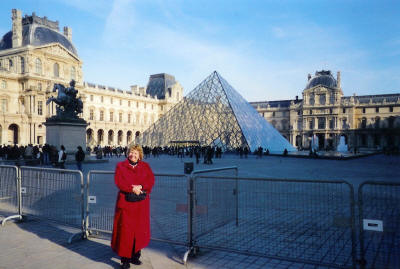| |
In early November 2006 we spent over two weeks in France, the BeNeLux countries, and Germany.
We started in Paris where Marguerite was a speaker at the annual conference of the International
Union Against Tuberculosis and Lung Disease (IUALTD). Her colleague, Dr. Tony Catanzaro,
has been active in IUALTD for many years and they were interested in learning more about UCSD’s
NIH project, the National Tuberculosis Curriculum Consortium (NTCC), that is now in year 4 of 5
years of funding. Marguerite was one of 5 presenters during an afternoon symposium, then Tony,
his wife Maggie, George and Marguerite had dinner together in an Italian restaurant near our
hotels. While in Paris we also had dinner with two recipients of the Marguerite Jackson Award
for Professional Nursing Excellence – Jeanne Maiden and Patty Graham were in Paris presenting a
critical care conference at the same time as the IUALTD! After Paris, we moved into George’s
war history agenda (described below) and then came home from Amsterdam. It was a very good
trip but we were major jet lagged this time – we just are not as young and energetic as we used
to be, but we walked at least 5 miles most days, so came back in much better shape!
|
|















